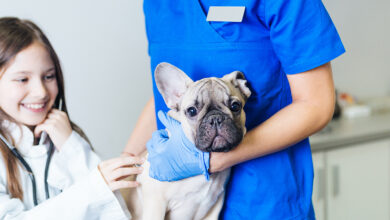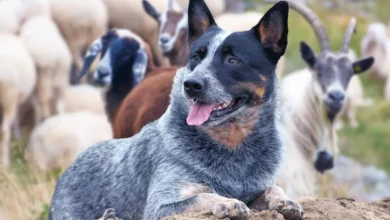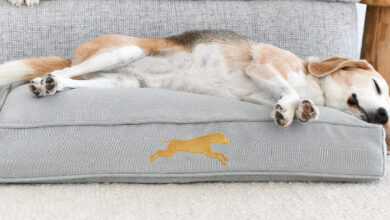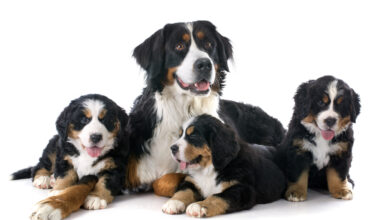Sausage Dogs as Pets: The Fascinating World of Sausage Dogs

FAQ: Sausage Dogs as Pets
Here are in-depth answers to some frequently asked questions about owning a dachshund:
Why are dachshunds sometimes considered one of the “worst” breeds?
This perception generally stems from common dachshund traits that require experienced ownership to properly manage. Let’s explore some of these traits:
- Barking – As alert watchdogs, dachshunds bark readily at triggers like noises, visitors, etc. Without training from puppyhood, they can bark excessively, which irritates some owners.
- Stubbornness – Their independent hunter’s instincts mean dachshunds can be more stubborn during training if the owner lacks consistency and positive reinforcement skills.
- Digging – Their ancestral prey drive makes some dachshunds prone to digging in yards if not provided sufficient mental and physical stimulation through other outlets like toys and play.
- Back injuries – Due to their long spinal structure, dachshunds are at higher risk for slipped discs and IVDD conditions if improperly lifted or exercised on hard surfaces without warm-ups or cool-downs.
However, with proper socialization, training, housing conditions and owner understanding of the breed, dachshunds can be affectionate, playful companions. Their potential issues are managed through experienced ownership that matches a dog’s needs, not an inherent negative of the breed itself.
Do sausage dogs make good pets?
Yes, dachshunds generally thrive as family pets when paired with fit owners who are able to meet their needs. Here’s an overview:
- Temperament – Their loyal, playful personalities bond them closely to their favorite people through attentive kindness. Many enjoy dog sports and tricks too.
- Care needs – Low exercise demands suit busy lives if coupled with mental stimulation daily through toys/treat puzzles. Regular walks and yard play prevent digging/barking outlets.
- Grooming needs – Daily brushing prevents matting for longer coats. Wirehairs need trims, all coats should be checked for burrs/foxtails. Nails trim every 1-2 months.
- Housing suitability – Dachshunds adapt to apartments if daily activity and exercise outlets are provided. Slower-paced homes are better for seniors. Fenced yards help burn energy.
- Family Match – Do exercise regularly and provide mental challenges through positive reinforcement training. Not suitable for very young children due to jump/nip potential if untrained.
So with proper care and owners committed to their needs, dachshunds indeed enjoy happy lives as pets and companions. Consistency delivered with patience and kindness is key.
Why are sausage dogs so popular?
Dachshunds appeal to many due to their charming smaller size, silly proportions, and devoted natures. Here are a few specific reasons for their ongoing appeal:
- Appearance – Their elongated bodies and short legs give them a quirky, huggable appearance that captures hearts. Unique color/coat varieties add appeal.
- Temperament – Despite independent streaks, they bond affectionately with their favorite people and families through daily interaction and play.
- Trainability – with consistency and positive techniques, they can learn simple obedience commands and tricks to entertain.
- Adaptability – fit active or quieter lifestyles when provided mental/physical activity outlets matched to the home. Popular for apartments too.
- Recognition – Long upheld as a classic breed in shows and media, such as cartoons/movies, keeps them publicly visible compared to rarer types. Welly award ads boosted popularity.
- Nostalgia factor – Many families grew up with the breed and want to share that bond with their own children. Strong reputation overall as fun-loving small dogs.
Sausage dogs, also commonly known as dachshunds, are one of the most beloved dog breeds in Australia. Their long bodies and short legs give them their iconic “sausage” appearance. However, beyond their cute looks, dachshunds have unique traits, needs, and histories that prospective owners should be aware of before welcoming one into their home.
Sausage Dog Breeds
There are three main breed varieties of dachshund: standard, miniature, and Kaninchen (rabbit hunting). Let’s take a closer look at each:
Standard Dachshund
Standard dachshunds are the largest of the three varieties. Male standards usually weigh 11-17 pounds and stand 9-11 inches tall at the shoulder. Females are slightly smaller at 9-13 pounds and 8-9 inches tall. Standards were originally bred for hunting larger prey like badgers and foxes. Their longer legs and stronger bones gave them an advantage for traversing rugged underground tunnels.
Miniature Dachshund
Miniature dachshunds are smaller versions of the standard breed. Males typically weigh 8-11 pounds and stand 7-8 inches tall. Females are usually 6-9 pounds and 6-7 inches tall. Minis were developed for hunting smaller game like rabbits and raccoons. Their portable size made them ideal for flushing prey out of their burrows.
Kaninchen Dachshund
Kaninchen, meaning “rabbit” in German, are the tiniest of the dachshund varieties. Males weigh 4-7 pounds on average and stand 5-6 inches tall. Females are roughly 4-6 pounds and 5 inches tall. As their name implies, Kaninchen dachshunds were specifically bred for hunting rabbits. Their extra small frames allowed them to easily fit into rabbit holes and boltholes.
So in summary – standards were for larger prey, minis for medium prey, and Kaninchen for small game like rabbits. Choosing the right size depends on your living space and lifestyle needs. All three varieties make devoted companions despite their varied histories as hunters.
Sausage Dog Temperament
Dachshunds have bold, outgoing personalities, befitting their skills as hunters. Some common traits to expect include:
- Courageous – Dachshunds were bred to chase prey into tunnels without hesitation. They can be fearless even against larger animals. Early socialization is important to curb any aggression.
- Loyal – Dachshunds form very strong bonds with their owners and families. They can be wary of strangers at first but are affectionate toward people they know well.
- Alert – Their prey drive makes dachshunds highly watchful and reactive. They bark readily to alert you of any sights or sounds outside. Consistent training is needed to curb excessive barking.
- Independent – While devoted to their people, dachshunds have stubborn hunter’s instincts. Positive reinforcement works much better than forceful training methods which can cause resentment. Patience is key.
- Intelligent – Dachshunds are clever problem solvers. Mental stimulation like puzzle toys, helps curb destructive behaviors from boredom. Early and continuous socialization and obedience lessons are also important to establish your dachshund’s role in your family pack.
In general, dachshunds do best in homes where they receive early socialization, consistent positive training, and mental/physical activities to fulfill their high energy levels. With the right guidance and boundaries, they can become wonderful companions. Just be aware of their potential for aggression toward other pets if not properly socialized from a young age.
Dachshund Puppies
Raising dachshund puppies requires extra care and patience due to their small size and rambunctious energy. Here are some tips for welcoming a dachshund pup into your home:
- Potty training – Take puppies outside frequently, at least every hour when awake at first. Use positive reinforcement like praise and treats when they go outdoors. Clean accidents thoroughly to remove odors.
- Crate training – Crates provide a safe space and help with potty training. Place a soft bed, and toys, and limit food/water before bedtime. Expect whining at first, which should subside within a few nights.
- Puppy-proofing – Dachshund puppies are wiggly explorers! Remove small items, wires, and any hazards they could chew or ingest. Monitor closely when out of their crate.
- Socialization – Early and frequent socialization with vaccinations is critical. Expose puppies to various sights, sounds, and people, as well as well-vaccinated neighborhood pets. This prevents fear-based reactivity as adults.
- Chewing stage – Provide multiple appropriate chew toys. Redirect to toys if catching your pup chewing household items. Praise and reward for chewing toys instead. be more stubborn and hard to train. Early socialization mitigates these tendencies.
With patience and guidance, dachshund puppies grow into faithful companions. The first year is important for proper socialization and instilling good habits.
Dachshund Dog Price
The price of dachshund puppies in Australia can vary depending on breed variety, coat type, pedigree history, and the reputation/location of the breeder. Here is a general guide to dachshund puppy costs:
- Standard Dachshund – $800-$1500
- Miniature Dachshund – $700-$1300
- Kaninchen Dachshund – $800-$1600
Additional factors that may increase the cost:
- Pedigreed purebreds (AKC, ANKC registered)
- Rare/unusual coat colors like brindle, cream, chocolate
- Champion show lines with titles in parents
- Breeders with proven track records
The coat type also impacts price – wirehaired and longhaired varieties are usually pricier than smooth coats which are more common. Expect to pay slightly more for a male puppy vs a female as well.
Adopting an adult or senior dachshund from a shelter will cost $200-500, depending on the organization. Rescue groups vet and rehome many purebred dogs each year as well.
Overall, expect to pay $800-$1500 on average for a healthy dachshund puppy from a responsible breeder. Prioritizing health over cost gives the best chance of a long, happy life together.
Standard Dachshund
Let’s examine the standard dachshund variety in more depth due to their distinctive larger size compared to the mini and kaninchen breeds.
History
Standards trace their lineage back to 16th century Germany where they were developed for hunting badgers and foxes over challenging terrain. They gained favor among European hunters and nobility for their skills underground. Standards came to Australia in the 1800s, when they remained a popular rural working and companion breed.
Appearance
As mentioned earlier, males average 11-17 pounds and stand 9-11 inches tall. Females are slightly smaller at 9-13 pounds and 8-9 inches. Standards have longer legs than other varieties. Coat colors include red, cream, wild boar, black & tan, chocolate, brindle, and piebald (white with coloring). Wirehaired and longhaired coats are allowed too. Standards have an elongated yet sturdy muscular build.
Temperament
Standards retain a strong prey drive but are not as aggressive toward other pets as some smaller varieties. They tend to be bolder and more energetic than minis due to their larger size. Standards enjoy long daily walks, play time in large fenced yards, and activities like agility, flyball, or hiking on a leash. Their problem-solving skills shine through in trick training.
Care Needs
Standards need moderate exercise, such as 1-2 walks per day, totaling 30-60 minutes. Provide lots of interactive play and toys too. Regular brushing keeps smooth/long coats tangle-free. Wirehairs require less grooming. Standards are prone to back problems, so avoid lifting them excessively and provide soft surfaces. Quality food helps maintain an athletic yet sturdy shape.
In summary, standards shine as active family dogs and protectors of rural properties. Just be ready to match their energy needs with daily exercise and mental stimulation.
So, in summary – cute looks, devoted natures, and trainability keep dachshunds at the top of many owners’ wanted lists worldwide, including here in Australia.




